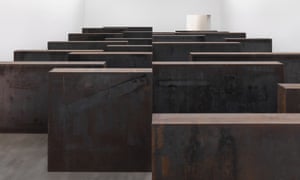 |
| View From the Vlatadon Monastery |
As I have walked around Thessaloniki this weekend, I kept wondering why is it that the countries with the friendliest, most hospitable people, great weather, great food, and joie de vivre are always victimized by countries that have none of the above to offer? As the Thessaloniki locals showed me smiling faces and every kindness, I couldn't help thinking how unfair it is that their salaries have been cut, their quality of life compromised, and their fiscal problems escalated because of EU policy making. Of course, I know that decisions are politically driven and Greece doesn't have the economic leeway to retaliate, but there's more to a country than the money it makes.
 |
| Byzantine Mosaics in Church of Gregorios Palamas |
While finances determine the difference between the good and the bad in Europe, if cultural heritage was valued, Greece would be the most respected member of the European Union. As I stood inside the chapel of the Vlatadon Monastery, which includes stones from the place where it is said that Paul preached to the Thessalonians, the monks around me busying themselves for a service, the mosaics sparkling as the late afternoon sun streamed in, I couldn't help thinking of the European Union's blindness. Surrounded by the traces of the beginning of civilisation in the monastery, I was appalled at the treatment of Greece. How could the decision makers not go out of their way to make sure that these treasures for all of human kind are preserved and kept alive for the generations to come?
 |
| View from Starbucks |
I spent my tourist time in Thessaloniki looking in churches, and mostly marvelling at the mosaics. And when I tired of being dumbfounded at the European Union's punishment of Greece, I was fascinated by the behavior of the people before the icons. People entered the church, walked swiftly around the church, stopping to kiss icons. But not all. They chose specific saints, for reasons which I am not religious enough to know. All of the icons are placed in kissing reach, at head height, quite in contrast to the raised altarpieces and frescoes of the Catholic churches all around Europe. The physical touching of the gold leaf of the icons is not only accepted, but expected. Again, I was thinking all the time of the elaborate constructions put in place in Catholic churches to separate people from the objects of veneration. All of these barriers are indicative, somehow, of the openness and ease of the Greek culture. The people do not stand for hours in adoration of images, distantly looking at the holy, they actually move to touch them. I should add, they don't actually kiss the icons, but rather, make the gesture towards them, always apparently at the hands.
 |
| Monastery of Vlatadon |
And outside in the streets and on the squares, I noticed the communal use of public spaces. Everywhere I went, there are many and large public benches for people to sit and relax together. Like the churches, public space is used to come freely together, with no roping off, no guards patrolling the grass (I am thinking of the Jardins de Luxembourg here in Paris). Similarly in churches, there were no guards, chairs placed all around, in every nook and cranny, encouraging people to come into the church, be quiet, or not. I sensed a culture of freedom that may be poorer than everywhere else in Europe, but as a tourist for a weekend, it was certainly easier to be there. Irrespective of the economic climate, in Thessaloniki, the locals maintain their embrace of life, their warmth for each other, the importance of being social, their generosity of spirit. Long live Greece.








